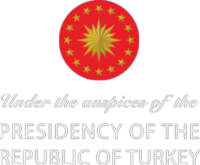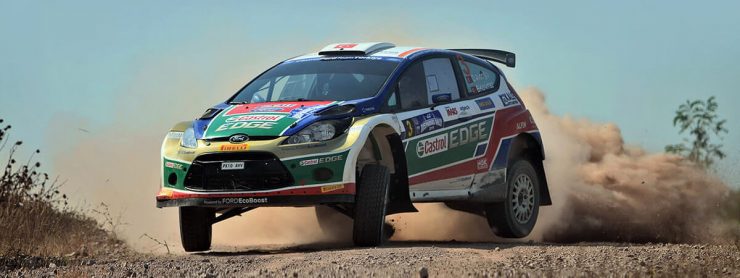ALS: Short form for Anti Lag System.
Active differential: The centre differential on a four wheel drive WRC car that uses computer input to send power to the wheels with the best grip, to maximise performance. From 2006 active front and rear differentials were banned and are instead mechanically operated.
Aerodynamics: Rally cars have spoilers, splitters and other shaped panels on the bodywork to direct cool air past the engine, gearbox and brakes and help keep the car firmly on the road – or flying level – at high speeds.
Co-driver: The navigator in the front passenger seat who gives a running commentary to the driver about road conditions ahead.
Dampers: An essential part of a rally car’s suspension. Each car has four – one connected to each wheel hub. Dampers are designed to absorb bumps from the road and keep the tyre in contact with the surface often as possible.
Damper settings: Rally car dampers are adjustable so they provide different characteristics. At the simplest level they can be soft or hard, but other settings like the amount of rebound or ride height can also be altered. Drivers often adjust their damper settings between stages by turning adjustment wheels on the units. The degree of change is usually measured in ‘clicks’ of the adjuster.
Ditch-hooking: When drivers drive a trail with their inside front wheel over a road-side ditch.
Drive shaft: The part of the transmission system which transfers drive from the front or rear differential to the wheel. Each rally car has four.
Driver safety: Rally cars don’t have airbags. Instead, the crew sit inside a protective roll cage and strap themselves in with six-point wide-strap safety belts. The car has an automatic fire extinguisher system plumbed-in and the crew wear flameproof overalls, safety helmets and a head and neck support system (see Hans device).
ERC: Short form for The FIA European Rally Championship.
FIA: The Federation Internationale de l’Automobile, the Geneva-based governing body for world-wide motor sport which regulates and controls the World Rally Championship.
Flying finish: A flying finish marks the end of a stage – so called because the cars ‘fly’ across it at full speed.
Gravel cars: (Also gravel crew) Cars which are driven through stages ahead of the competitors to report back on weather and surface conditions.
Gravel settings: The choice of tyres and suspension adjustments to give a WRC car maximum performance on a loose surfaced stage.
HANS device: HANS stands for head and neck support. Worn on the shoulders and around the back of the neck, in the event of an accident, the HANS device reduces the amount the head can move can help protect a driver’s head and neck from serious injury.
Intercom: The audio link that enables the driver to hear the co-driver’s instructions above the noise of the engine. Intercom headphones and a microphone are built into the safety helmet.
Launch control: This helps the driver to make the fastest getaway from a standing start. The system has a device that prevents the engine stalling.
Leg: Term to describe a day’s rallying over several stages of the World Rally Championship event
OTL: Over time limit. Competitors arriving more than 15 minutes late at a time control or service area, or who are more than 30 minutes late in total during the rally, are OTL and retire from the day’s competition.
Pace notes: A description of the road ahead, called out by the co-driver to inform the driver of what is coming up. Pace notes for every rally are made during the pre-event reconnaissance. As they recce each stage, drivers describe the road to their co-drivers, who write down the information in a form of shorthand. During the rally the co-driver reads the notes back to the driver.
Parc ferme: The secure area where all competing rally cars are kept overnight.
Podium Ramp: Raised platform at the official start and finish of the rally, over which the competitors must drive their cars.
Race suit: Rally crews wear racing overalls containing three layers of flameproof material, plus flameproof underwear and a flameproof balaclava under their helmet. They get quite hot when the temperature reaches 40 degrees in Greece…
Recce car: A largely standard road car which the driver and co-driver use to reconnoitre the route before the rally starts and prepare pace notes.
Recce: Before every rally, drivers and co-drivers spend two days reconnoitring the route at a maximum speed (set by rally organisers) of between 50 and 70kph. Crews are allowed two passes through each stage to familiarise themselves with the route and make pace notes.
Restrictor: To limit engine output to around 300bhp, the FIA requires all WRC specification engines to be fitted with a 34mm diameter inlet restrictor which limits the flow of fuel/air mixture to the combustion chambers. Without a restrictor engines would produce more than 500bhp.
Road book: A specially prepared book of instruction, timings, directions and maps issued to each crew by the rally organiser
Road section: A public road which links the special stages, service points and parc ferme. Drivers must obey all applicable traffic laws on road sections.
Roll cage: A structure of high carbon steel tubes welded inside the passenger compartment designed to keep the driver and co-driver safe in an impact or roll-over.
Running order: The order in which competitors tackle the stages. The running order (also called the start order) is different for each day of the rally. The order for the opening day is determined by the drivers’ championship standings – with the leader going first. For days two and three, entrants tackle the stages in rally leading order – with the leader going first.
Scrutineers: Technical officials who check the legality of the rally cars before, during and after the event.
Seeding: The order in which drivers start each rally, determined by their success in past rallies.
Sequential gearbox: An arrangement in which the gear lever or paddle selects each gear in turn (1-2-3-4-5-6) when changing up and vice-versa when changing down. Most WRC gearboxes are semi-automatic and have an electro-hydraulic control mechanism which manages the throttle, clutch and gear change.
Service park: A designated area where checks, maintenance and running repairs can be made to the rally cars, subject to strict time limits.
Shakedown: The opportunity for crews to check their competition cars, on terrain similar to the rally, just before the event starts.
Stages: The competitive sections of the rally, also called special stages, where drivers and co-drivers drive as fast as they can to achieve the shortest time.
Stage time: The time recorded from the standing start of a stage to the flying finish.
Stop control: A point 200-500 metres past the flying finish where the car must stop to have its time recorded.
Studs: Metal spikes fitted to the treads of winter tyres to give grip on snow and ice.
Sump Guard: A reinforced panel under the car’s engine bay to protect the engine’s sump (the oil reservoir) and transmission.
Super Special stage: A stage – often set up in a sports stadium – with two parallel tracks that enable a pair of rally drivers to race each other.
Target time: The official time allowed by rally organisers for a rally car to complete a non-competitive road section. Time penalties are applied if competitors check-in earlier or later than the target time.
Time card: Carried by the co-driver, the time card is a record of stage times and time control arrival times throughout the rally. The card is stamped by event officials as the rally progresses and provides proof of a competitor’s whereabouts in case of a dispute.
Time control: The place where cars must stop to get an official passing time recorded by rally officials
Time penalty: Rally crews are penalised 10 seconds for every minute the car is late to a time control – whether that is a stage start, service-in control, service-out control. Checking in early to a time control carries a stiffer penalty of one minute for every minute early.
Turbocharger: An exhaust-driven turbine that pressurises the fuel/air mixture into the engine to enable it to develop more power. Some rally cars use turbochargers (turbos) which develop 4-5 times the pressure of the turbo on a road car. Thanks to a system called anti-lag, most WRC cars are able to produce maximum turbo boost even at low engine speeds.
WRC: Short form for The World Rally Championship.
Zero car: A course car driven through a stage before the competitors start it to alert spectators that the section is live.




























